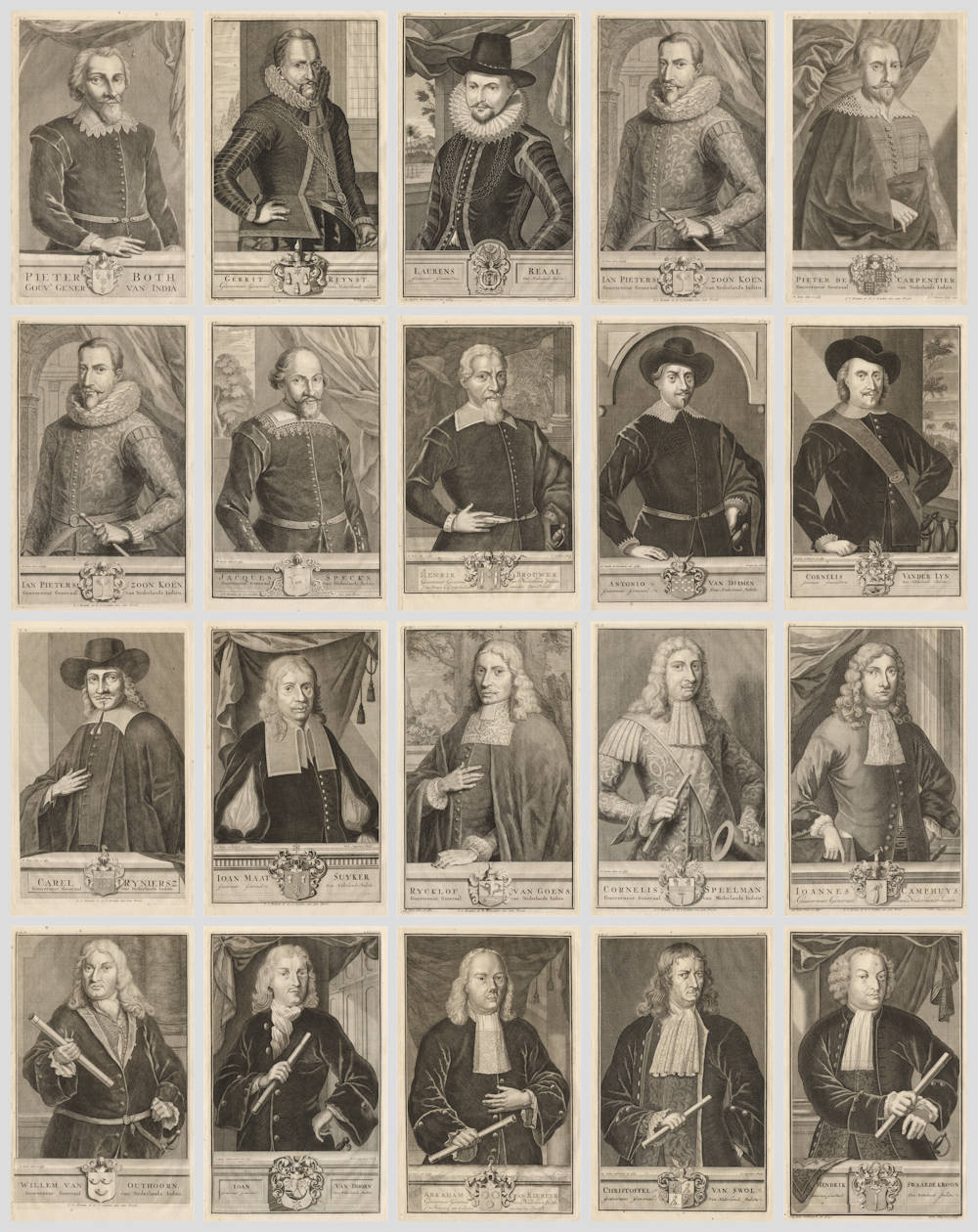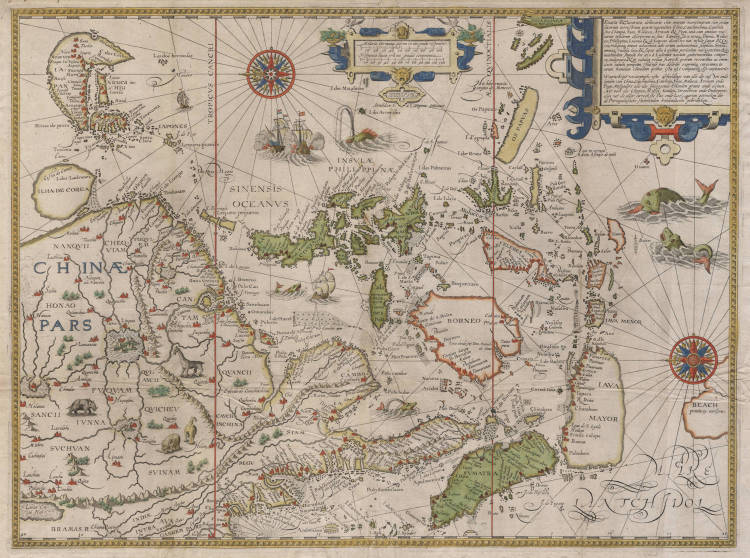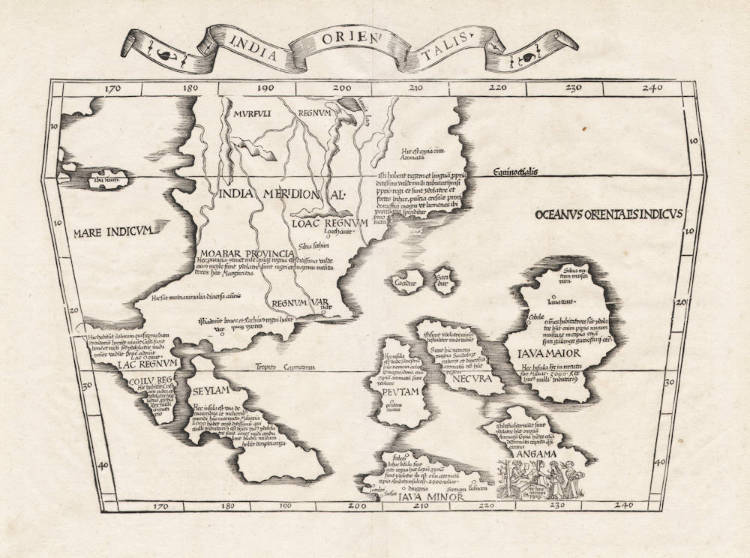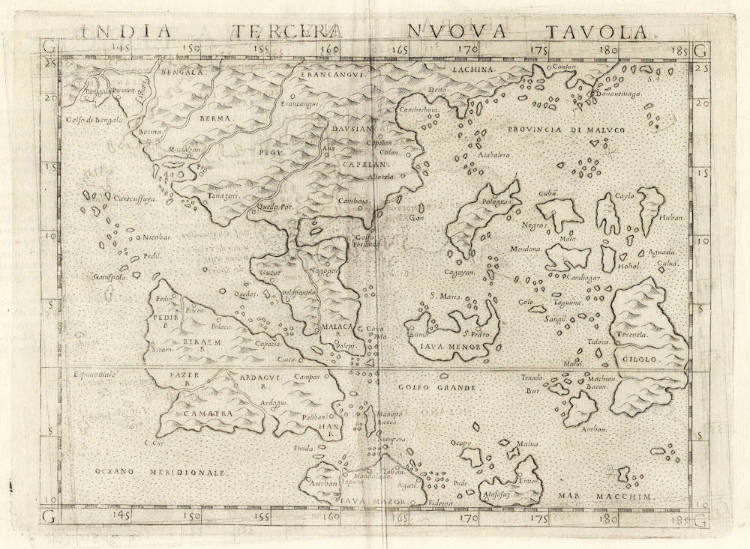Leen Helmink Antique Maps
Portraits of the VOC Governor Generals by Valentijn
Stock number: 19059
Zoom ImageCartographer(s)
François Valentijn (biography)
Title
VOC Governor Generals
First Published
Amsterdam, 1724
This Edition
1724
Technique
Condition
pristine
Price
This Item is Coming Soon
Description
Complete portrait series of the VOC Governor Generals published by François Valentijn in his Oud en Nieuw Oost-Indiën.
Condition
Strong and early imprints of the copperplates. Good paper margins. Mint collector's condition.
The position of the VOC Governor General
The Dutch East India Company (VOC) is the first corporation that issued shares and that officially operated on multiple continents. The charter of the VOC as granted by the Dutch States General comprised all the waters and coasts to the east of the Cape of Good Hope and to the west of the Strait of Magellan, thereby covering all matters for the Indian Ocean, the Pacific Ocean and the adjoining coasts.
The company’s charter empowered it to trade, to build fortresses, to maintain armies for war and defense, to establish treaties, to speak justice, and to govern.
The board of directors and ultimate authority for the VOC was with the “Gentlemen XVII”, seventeen shareholder delegates that proportionally represented the six “Chambers” (Kamers) in six port cities: Amsterdam, Middelburg, Enkhuizen, Hoorn, Delft and Rotterdam.
Because of the distance to the East Indies, communication lines were long. A one way letter would take on average nine months, so a response to a request required on average eighteen months.
For all matters except general and long term policies, the authority was in the hands of the Governor General (or Landvoogd) in Batavia, thus being one of the most powerful rulers of the Eastern Hemisphere and beyond.
Portrait Gallery
Valentijn's gallery includes a coherent series of the first twenty VOC Governor Generals of the Dutch East Indies that served up to then. Because Jan Pieterszoon Coen had served two non-consecutive terms (As fourth and sixth Governor General), there are nineteen portraits in total. The series is engraved in copper by Dirk Jongman, after drawings by Matthijs Balen, a portrait painter from Dordrecht (like Valentijn).
A complete series of contemporary oil portraits of the consecutive governors was in Batavia Castle (Kasteel Batavia), the head quarters of the VOC in Asia and the seat of the governor generals. Matthijs Balen must have made his drawings of the portraits there. He is also responsible for the design of many other images in Valentijn's book.
The oil portraits of the governors were painted on teak (djati) hardwood panel and measure 98x78 cm. Apart from the first few ones, which were likely made in hindsight, the state portraits would have been made at the time of the appointment of a new governor general. The portrait gallery is mentioned by several writers over the centuries, and each portrait is separately described by Valentijn.
Sometime after the construction of Batavia Castle in 1619, the VOC decided to decorate the large conference room of the castle with a gallery of uniform oil painted state portrait of the consecutive Governors Generals.
The conference room (Raadzaal) was used for board meetings of the high council for the Indies, for official receptions, and for parties.
It had a simple early 17th century tone, with wood beams ceiling, a large chandelier for lighting, black and white marble floor tiles, high square windows, Renaissance chairs along the walls, a long conference table with 17th century chairs with high backs, with a much larger and decorated chair for the Governor General, and behind him a long cabinet archiving the resolutions. A good image and detailed description of the conference room is given by Heydt, and the portrait gallery is in full display on the left of his print of the council room here:
Johan Wolfgang Heydt 1744 - Meeting Room of the Council of the Indies
The principal portraits in the Castle suffered severely from the humid and hot climate, from tropical insects, microorganisms, and the leaking roof of the castle in later years. Most of the original principal portraits from Batavia castle have survived, albeit in very poor condition. They are now part of the Amsterdam Rijksmuseum collection.
François Valentijn (1666 – 1727)
François Valentijn (17 April 1666 – 1727) was a Dutch minister, naturalist and author whose Oud en Nieuw Oost-Indiën ("Old and New East-Indies") describes the history of the Dutch East India Company and the countries of the Far East.
François Valentijn was born in 1666 in Dordrecht, as the eldest of seven children of Abraham Valentijn and Maria Rijsbergen. He lived most of his life in Dordrecht; however, he is known for his activities in the tropics, notably in Ambon, in the Maluku Archipelago. Valentijn studied theology and philosophy at the University of Leiden and the University of Utrecht before leaving for a career as a preacher in the Indies.
In total, Valentijn lived in the East Indies for 16 years. Valentijn was first employed by the VOC (Vereenigde Oost-Indische Compagnie) at the age of 19 as minister to the East Indies, where he became a friend of the German naturalist Georg Eberhard Rumpf (Rumphius). He returned and lived in the Netherlands for about ten years before returning to the Indies in 1705 where he was to serve as army chaplain on an expedition in eastern Java.
He finally returned to Dordrecht where he found time to write his Oud en Nieuw Oost-Indiën (1724–26) a massive work of five parts published in eight volumes and containing over one thousand engraved illustrations and some of the most accurate maps of the Indies of the time. He died in The Hague, Netherlands, in 1727.
Valentijn probably had access to the VOC's archive of maps and geographic trade secrets, which they had always guarded jealously. Johannes van Keulen II (d. 1755) became Hydrographer to the V.O.C. at the time Valentijn's Oud en Nieuw Oost-Indiën was published. It was in the younger van Keulen's time that many of the VOC charts were first published, one signal of the decline of Dutch dominance in the spice trade. One uncommon grace afforded Valentijn was that he lived to see his work published; the VOC (Dutch East India Company) strictly enforced a policy prohibiting former employees from publishing anything about the region or their colonial administration.
(Wikipedia)
"The first book to give a comprehensive account, in text and illustration, of the peoples, places and natural history of Indonesia."
(Bastin & Brommer)
The Oud en Nieuw Oost-Indien was created both from the voluminous journals Valentijn had amassed during his two stays in Southeast Asia, as well as from his own research, correspondence, and from previously unpublished material secured from VOC officials. The work contained an unprecedented selection of large-scale maps and views of the Indies, many of which were superior to previously available maps.
(Suarez)
François Valentijn's Oud en Nieuw Oost-Indien (Old and New East Indies) has for long been regarded as a primary source of information on a number of regions of maritime Asia. It is a veritable encyclopaedia, bringing together an array of facts, trivial and vital, from a wide range of contemporary and earlier literature, acknowledged and unacknowledged, and contains valuable excerpts from contemporary documents of the Dutch East India Company and from private papers.
(Arasaratnam)
François Valentijn was born on April 17, 1666, in the city of Dordrecht, the Netherlands, as the eldest of seven children of Abraham Valentijn and Maria Rijsbergen. He studied theology at the universities of Utrecht and Leiden. During his life he spent nearly fifteen years as a minister in the Dutch East-Indies (1685–1694 and 1706–1713), mostly in the Moluccan Archipelago. In 1692 he entered into matrimony with Cornelia Snaats (1660–1717) who bore him two daughters. Valentijn died on August 6, 1727, in the city of The Hague. Valentijn is often noted for his role in discussions about early translations of the Bible into Malay. However, his established reputation rests on his multivolume work on Asia titled Oud en Nieuw Oost-Indië (Old and New East-Indies).
REVEREND VALENTIJN IN THE MOLUCCAS
At the age of nineteen, Valentijn was called to the ministry on Ambon Island, the chief trade and administrative hub of the Moluccan Archipelago. In the city of Ambon, he preached in the Malay language and trained local Ambonese assistant ministers, while also having to inspect some fifty Christian parishes in the region.
In the 1600s the catechism and liturgy were offered in so-called High-Malay, which most local Christians did not understand. Valentijn fervently opposed the use of High-Malay and instead propagated Ambon-Malay because, in his opinion, all Christian communities in the Indies understood this local dialect.
During his stay in Ambon, a number of Valentijn's colleagues blamed him for paying too much attention to his wife and making a living from usury. On top of these accusations, he was found guilty of manipulating official church records. The relationship with his colleagues grew tense because Valentijn disliked his task of inspecting the Christian parishes on other islands. In 1694 he returned to the Netherlands where he spent much time on his Bible translation.
In 1705 Valentijn returned to Ambon. During this period, Reverend Valentijn got into a conflict with the governor of Ambon about too much interference of the secular administration in church affairs without the consent of the church administration. This conflict worsened after Valentijn rejected his call by the central colonial administration to the island of Ternate. In 1713 his repeated request for repatriation was finally met.
THE MALAY BIBLE TRANSLATION
In 1693 during a meeting with the Church Council of Batavia, Valentijn announced that he had completed the translation of the Bible into Ambon-Malay. The Church Council refused to publish Valentijn's translation because two years earlier they assigned the task of translating the Bible into High-Malay to the Batavia-based Reverend Melchior Leydecker.
After Valentijn returned to the Netherlands in 1695, he rallied support for his translation. A heated discussion unfolded, in which Valentijn and, amongst others, the Dutch Reformed synods of both the provinces of North- and South-Holland, opposed the critique of Leydecker and the Church Council of Batavia. The Council's criticism largely concerned Valentijn's use of a poor dialect of Malay. The synods in the Netherlands were not in the position to participate in the debate as most relevant linguists resided in the Indies, but Valentijn's personal network most likely contributed to the support for Valentijn's translation.
In 1706 a special commission of ministers in the Indies inspected a revised edition of Valentijn's translation but still noticed a number of shortcomings. Although Valentijn told the commission that he would redo the translation, the final revised edition was never presented to the Church Council. The Council eventually decided to publish Leydecker's High-Malay translation, which was used in the Moluccas from 1733 onward into the twentieth century.
OUD EN NIEUW OOST-INDIË
From 1719 onward, Valentijn, as a private citizen, devoted himself chiefly to his magnum opus, Oud en Nieuw Oost-Indië (ONOI), comprising his own notes, observations, sections of writings from his personal library, and materials trusted to him by former colonial officials. In 1724, the first two volumes were published in the cities of Dordrecht and Amsterdam, followed by the following three volumes in 1726. This work comprises geographical and ethnological descriptions of the Moluccas and the trading contacts of the Dutch East India Company (VOC) throughout Asia.
Scholars consider this substantial work the first Dutch encyclopedic reference for Asia. ONOI contains factual data, descriptions of persons and towns, anecdotes, ethnological engravings, maps, sketches of coastlines, and city plans, as well as excerpts of official documents of the church council and colonial administration.
Valentijn wrote in an uncorrupted form of Dutch, which many contemporary writers were not able to compete with. The structure of Valentijn's colossal work is rather chaotic: the descriptions of more than thirty regions are erratically spread over a total number of forty-nine books in five volumes, each consisting of two parts, and held together in eight bindings.
Since the publication of ONOI, numerous scholars have accused Valentijn of plagiarism. It is true that he included abstracts of other works, such as the celebrated account on the Ambon islands by Rumphius, without referencing them properly. However, general acknowledgment of sources can be found in several places, for example, in his preface to the third volume.
THE INFLUENCE OF VALENTIJN'S WORK
For almost two centuries, Valentijn's work was the single credible reference for Asia. ONOI was therefore used as the main manual for Dutch civil servants and colonial administrators who were sent to work in the East Indies.
Valentijn's work is still a major source for historical studies on the Dutch East Indies. For example, the reference book on Dutch-Asiatic shipping in the seventeenth and eighteenth centuries (The Hague, 1979–1987) was compiled on the basis of materials derived from Valentijn's work. The importance of ONOI for the historical reconstruction of other regions is clearly demonstrated by the publication of English translations of Valentijn's parts concerning the Cape of Good Hope (1971–1973) and the first twelve chapters of his description of Ceylon (1978).
Valentijn's work also proved to be of great importance for the natural history of the Moluccas. Valentijn included in ONOI descriptions by Rumphius on, for example, Ambonese animals, while Rumphius's original unpublished manuscript was later lost. In 1754 Valentijn's part on sea flora and fauna was separately published in Amsterdam, and some twenty years later translated into German. It was only in 2004 that the complete ONOI was reprinted and made available to a larger public.
(Encyclopedia.com)






